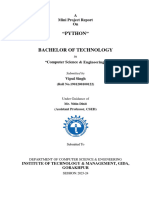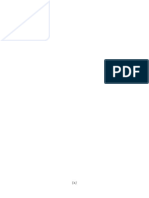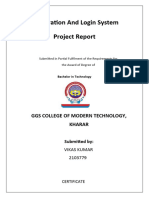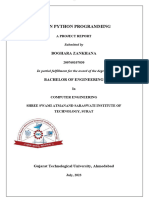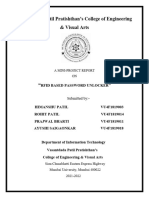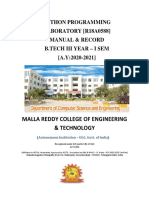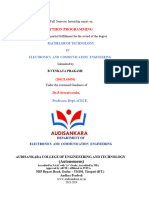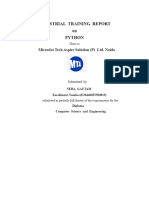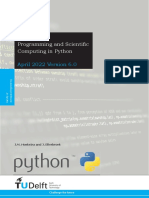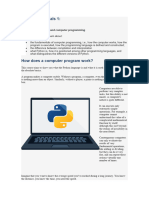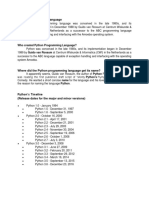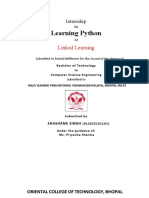0% found this document useful (0 votes)
33 views18 pagesMini Project Report (Demo)
The document is a mini project report on 'Python' submitted by a student of the Bachelor of Technology in Computer Science & Engineering. It outlines the project's objectives, the use of image processing to detect counterfeit currency, and includes sections on the history and features of Python programming. The report also includes acknowledgments, a declaration of originality, and a structured table of contents.
Uploaded by
sshikhar200011Copyright
© © All Rights Reserved
We take content rights seriously. If you suspect this is your content, claim it here.
Available Formats
Download as DOCX, PDF, TXT or read online on Scribd
0% found this document useful (0 votes)
33 views18 pagesMini Project Report (Demo)
The document is a mini project report on 'Python' submitted by a student of the Bachelor of Technology in Computer Science & Engineering. It outlines the project's objectives, the use of image processing to detect counterfeit currency, and includes sections on the history and features of Python programming. The report also includes acknowledgments, a declaration of originality, and a structured table of contents.
Uploaded by
sshikhar200011Copyright
© © All Rights Reserved
We take content rights seriously. If you suspect this is your content, claim it here.
Available Formats
Download as DOCX, PDF, TXT or read online on Scribd
/ 18


